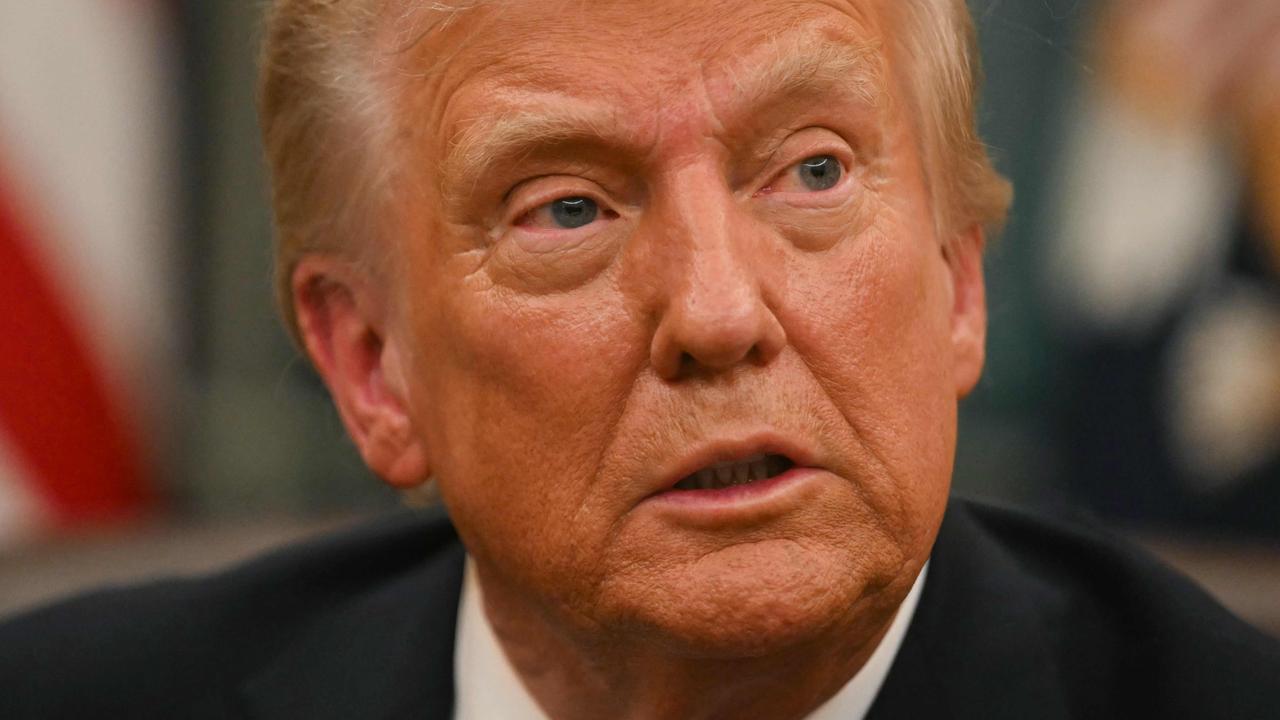‘We may have to fight’: Pentagon officials issue terrifying China war warning
Pentagon insiders have issued a terrifying warning, claiming the world could be plunged into a brutal conflict with little notice.

Innovation
Don't miss out on the headlines from Innovation. Followed categories will be added to My News.
A war with China or Russia “can happen at any time”, leading US Pentagon figures have warned.
US Secretary of Air Force Frank Kendell told a gathering of academy cadets earlier this month that “we may have to fight”.
He insisted the US and its Western allies needed a “sense of urgency”.
“War with China or Russia is not unlikely; it can happen at any time,” Kendall warned.
His statement was reinforced late last week when Admiral Samuel Paparo – commander of US forces in the Indo-Pacific region (which includes Australia) – told the Brookings Institution think-tank that recent Chinese military activity had proven it was readier for war than it ever had been.

“This was the largest rehearsal we’ve seen,” he said of a surge of Chinese warships and aircraft around Taiwan during its national celebrations in October.
Russia has followed up its invasion of Crimea in 2014 with a full-scale assault on Ukraine in 2022. It also has forces active in Syria and North Africa.
China has, in recent years, become more aggressive in asserting its arbitrary claims to much of the Himalayan Mountains on its border with India. It is also forcefully taking control of the Spratly Islands and much of the South China Sea in an attempt to force out Philippine, Vietnamese, Indonesian and Malaysian commercial activities.

Beijing is taking similar measures against Japan and its Senkaku Islands. And Chairman Xi Jinping has vowed to complete Chairman Mao’s failed takeover of Taiwan.
Kendall said it was the first time the United States had been confronted by two nuclear-capable states.
“The threat of nuclear war has returned in what may be even more dangerous forms,” he said. “You will have to serve and live under a nuclear threat. You will have the task of preventing the greatest imaginable catastrophe in human history.”
China unchained
Admiral Paparo told the Brookings Institution that China had displayed its full new military might across a broad swath of Southeast Asia this year.
“It was the ‘jointest’ operations for air, missile, maritime power that I’d seen over an entire career of being an observer,” he said.
The Admiral referred to military exercises that mobilised three-quarters of its entire amphibious assault force. Helicopter assault ships and civilian ferries displayed China’s ability to deploy 43 amphibious brigades of troops to breach defended beaches and assault coastal cities.
“This was the largest rehearsal we’ve seen on an upward trajectory of PLA (People’s Liberation Army) modernisation,” Paparo said.
“This included on one particular day 152 vessels at sea.”
China has embarked on a rapid build-up of its deepwater navy over the past 20 years. It now outnumbers the US navy with 370 ships against 295. The US maintains its lead only in the number of aircraft carriers and nuclear-powered attack submarines.
But it has also invested heavily in new technology, including hypersonic vehicles and space weaponry.

“You may well have to lead in combat in a type of conflict with which we have no modern experience in the Air Force or Space Force or in the American military in general,” Secretary Kendall told the Air Force cadets.
Admiral Paparo warned China and Russia were not the only threats he faced in the Pacific.
North Korea had recently demonstrated its ability to build intercontinental ballistic missiles able to strike anywhere within the United States. All that remained was the successful mating of a nuclear warhead to the rocket body.
“But we just see continued testing towards that,” he added.
War of attrition
Admiral Paparo said US forces are being stretched by the number and scale of global conflicts.

In particular, Hamas, Iranian and Hezbollah rocket attacks on Israel and international shipping have had to be met with air defence missiles. And Ukraine was also in need of air defence assets in its attempts to thwart President Vladimir Putin’s invasion.
“Now, with some of the Patriots that have been employed, some of the air-to-air missiles that have been employed, it is now eating into stocks, and to say otherwise would be dishonest,” the Admiral said.
“It imposes costs on the readiness of America to respond in the Indo-Pacific region, which is the most stressing theatre for the quantity and quality of munitions because it is the most capable potential adversary in the world.”
China has an arsenal of long-range missiles specifically designed to bypass US defences and sink its critical nuclear-powered aircraft carriers. It has also established a network of artificial island fortresses that will make counter-attacks on Chinese ports and airfields difficult.
Admiral Paparo was also downbeat about the potential of India joining a coalition of nations to oppose China’s expansionist pressures.
A sudden thaw between Beijing and New Delhi over who has access to parts of the contested Himalayan border has seen Prime Minister Modi move to strengthen ties with China’s alternative BRICS economic community.
“India cherishes its history in the non-aligned movement,” Paparo said.
“So those who aspire to an alliance with India, I think, don’t hold your breath. We’re not holding our breath either.”
Jamie Seidel is a freelance writer | @JamieSeidel
Originally published as ‘We may have to fight’: Pentagon officials issue terrifying China war warning





